Ukrainian Conflict Photos: The Kind Of Rebellion The West Wants To See

As the conflict in Ukraine escalates, one aspect seems almost as striking as the grave geopolitical ramifications: the photographs coming out of Kiev and Crimea.
More so than any uprising in recent memory, Ukraine has produced a stunning and remarkably popular array of conflict images. Photographs of equal power have come out of the Central African Republic, the Congo, Egypt, Liberia, Libya and Sudan, yet those conflicts have not inspired the outpouring of photoessays in newspapers and magazines and on websites and blogs that Ukraine has.
Why is that? Does Ukraine simply represent a more attractive confrontation?
In part, yes. For Western audiences in particular, the billowing black smoke, colorful banners, classical architecture and photogenic faces are made to order. They fit our notions of what a popular rebellion should look like. And with ubiquitous cell phone cameras and droves of professional photographers, it's all there for the taking.
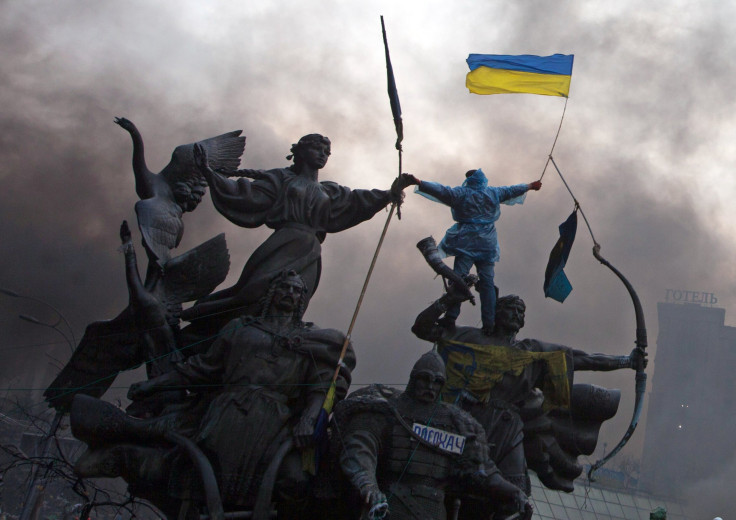
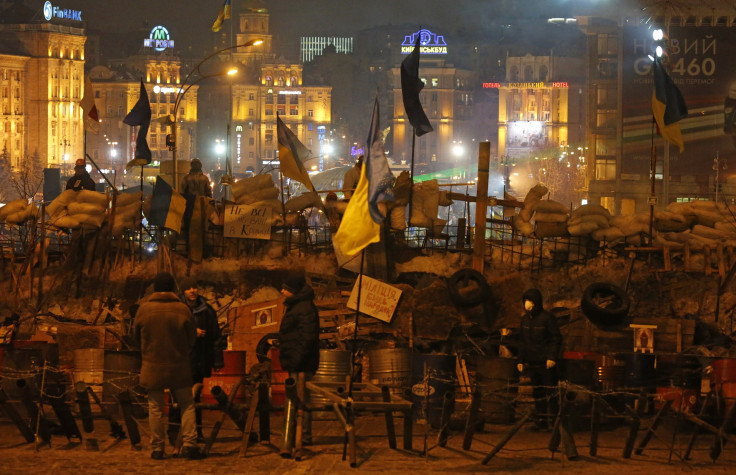
There is more to the popularity of Ukrainian conflict images than attractively provocative scenes -- something deeply rooted in the Western psyche: the shock of seeing the known world upended, with sadly familiar violence juxtaposed against recognizable facades of Western order, which has not been precisely the case with uprisings elsewhere. There's a reason the Reuters image of clashes in Simferopol looks like a cropping from Eugene Delacroix's painting.
Then there are the people themselves. Anyone who follows war photography has seen their share of faces uplifted in anger or downcast in sorrow, whether in war-torn cities, steamy jungles or dusty deserts. But how often do modern Western audiences see faces in the throes of violent political upheaval that are so similar to their own? The Ukraine photos share color palettes with classical war paintings in more ways than one.

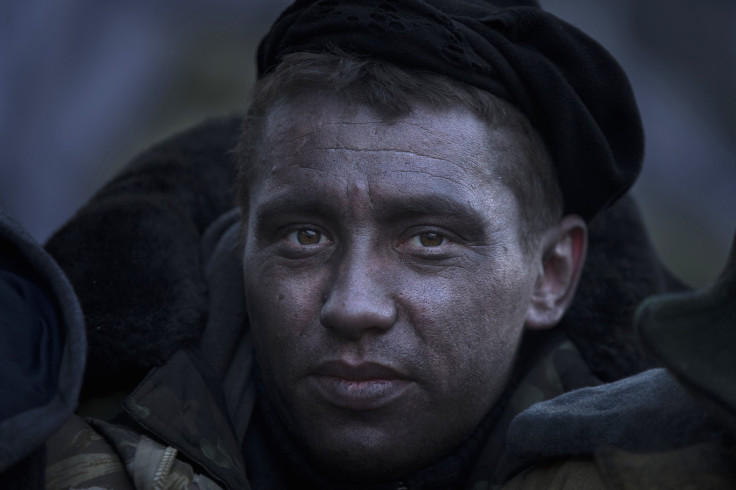
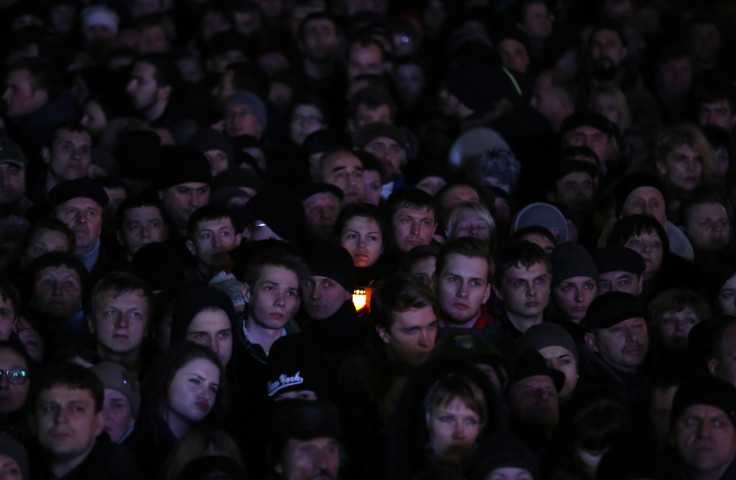
More than 80 people have died in the clashes, and by almost any measure the future of Ukraine looks decidedly grim. Considering that, it is perhaps the height of Western indulgence to take the aesthetics of the country's rebellion into account. Yet the images have captured our attention, and did so before the full weight of what was happening became apparent -- the possibility of a full-scale war that could spread, as the Arab Spring has.
Even the lighting of the Ukrainian uprising seems like it was designed to attract and hold our gaze. Every conflict zone produces images of nighttime violence illuminated by flaming torches and burning buildings, tires and overturned vehicles, and that has been the case in Ukraine, too, but with a few new special effects, including laser lighting -- which protesters have used to spotlight snipers -- and the communal flickering of thousands of cell phone flashlights. The results are often stunning.
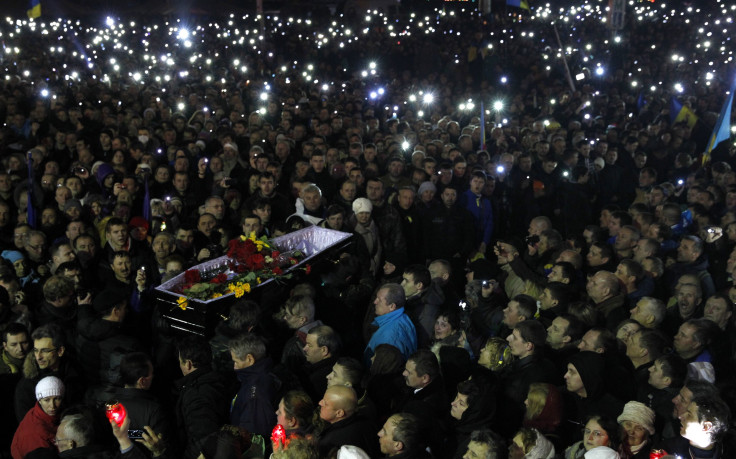
The combination of effects also sometimes gives the protests the look of a staged theatrical production:

And in fact, down there among the crowds are scenes that could easily be outtakes from an updated performance of "Les Miserables":
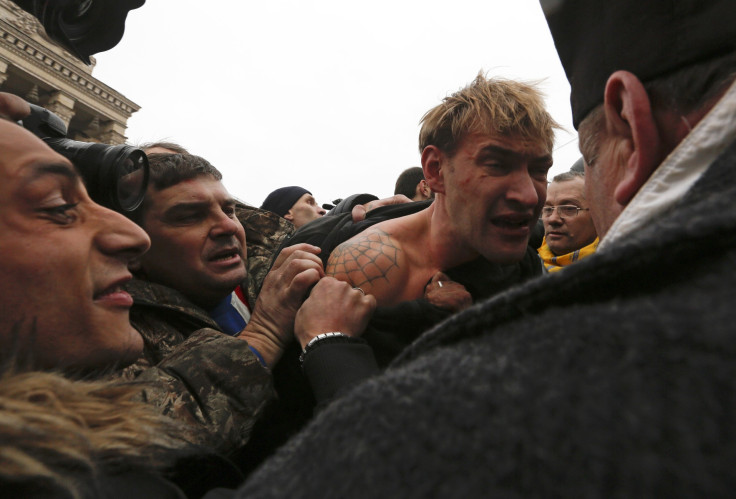
Meanwhile, the Russians are actually staging performances, in this case by Navy entertainers:

A recent article in Politico Magazine suggested that the West's fascination with conflict images from Ukraine stems from a preoccupation with “disaster porn.” But for now, the scenes are far more cinematic than gory:
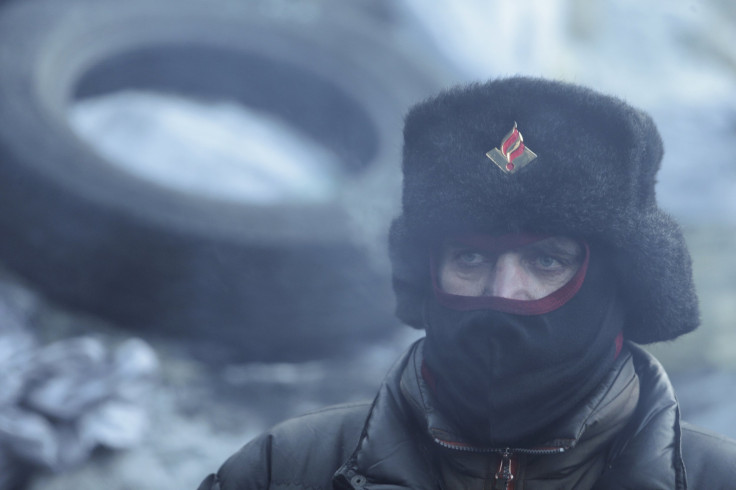
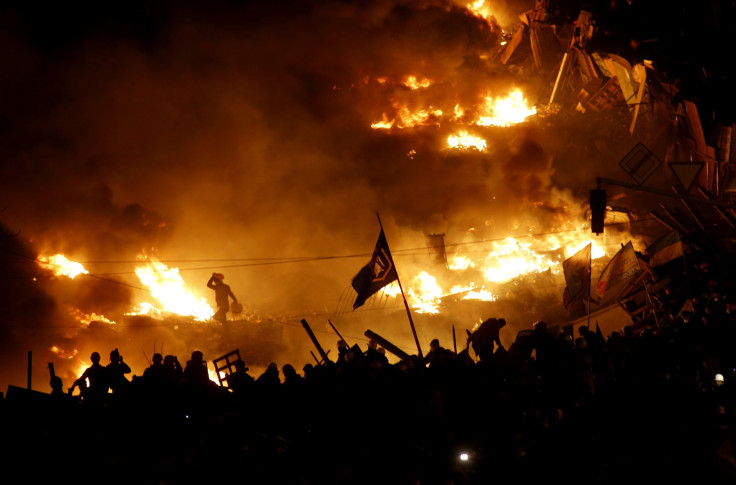
Many of the photographs transcend journalism, channeling imagery that has always lent itself to Western art -- which is something many Ukrainians seem to recognize.
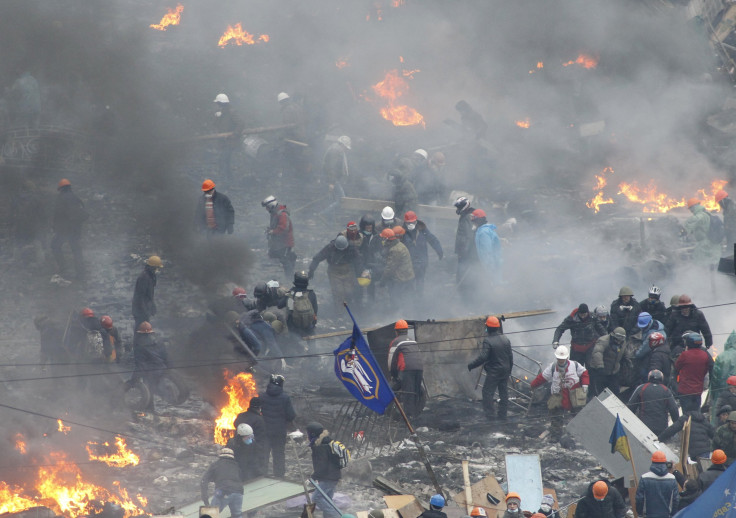

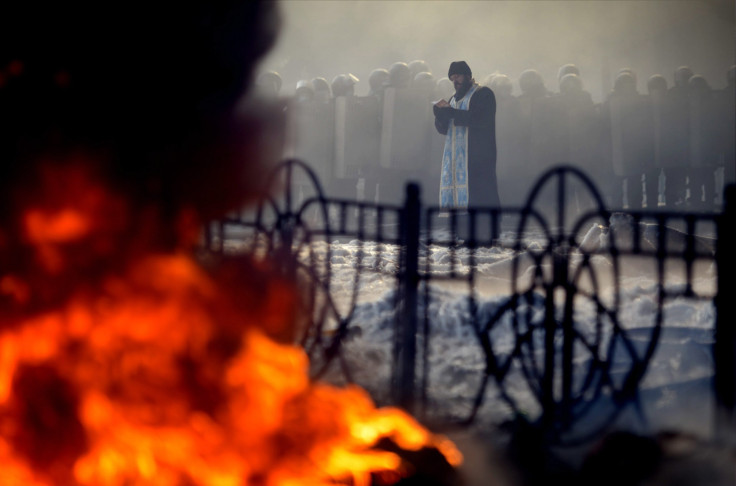

It helps that considerable journalistic talent has descended upon Ukraine, drawn by the photogenic qualities of the uprising and the tandem lure of contemporary news and history. In fact, conflict photography had its origins in Crimea during the 1850s, when British artist Roger Fenton used the new medium to systematically document the Crimean War between Russia, Europe and the Ottoman Empire. Though Fenton's images were static, owing to necessarily long exposure times, advanced technology now enables photographers to capture dramatic scenes using any available light:
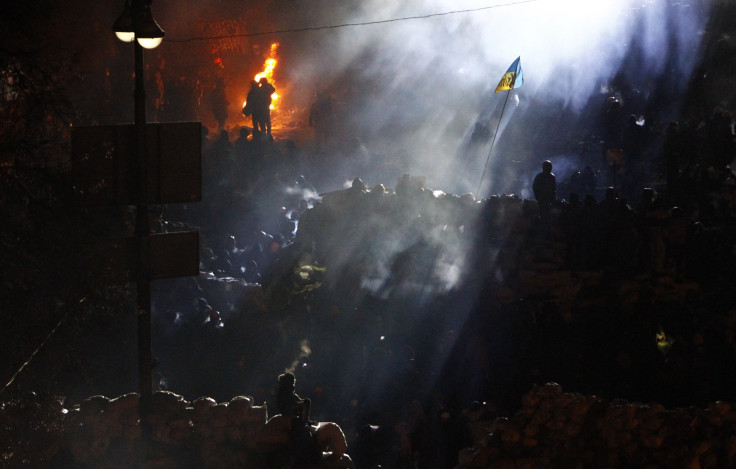
The resulting images have transfixed us. The truth, at its most terrifying and seductive, is on full display. Yet at times the melding of historical romance and contemporary reality has been surreal. During the closing ceremony of the Sochi Winter Olympics, a highly choreographed spectacle illustrating cultural diversity echoed another, far more complicated reality that was taking shape in Ukraine:

Yet for all the sense of déja vu, there is clearly something new and compelling about the images from Ukraine, and that, too, makes it hard to look away. It's as if we're peering into the history of Western civilization at the same time that we're glimpsing the bewildering possibilities of its future:


Follow Alan Huffman on Twitter @alanhuffman1.
© Copyright IBTimes 2024. All rights reserved.






















